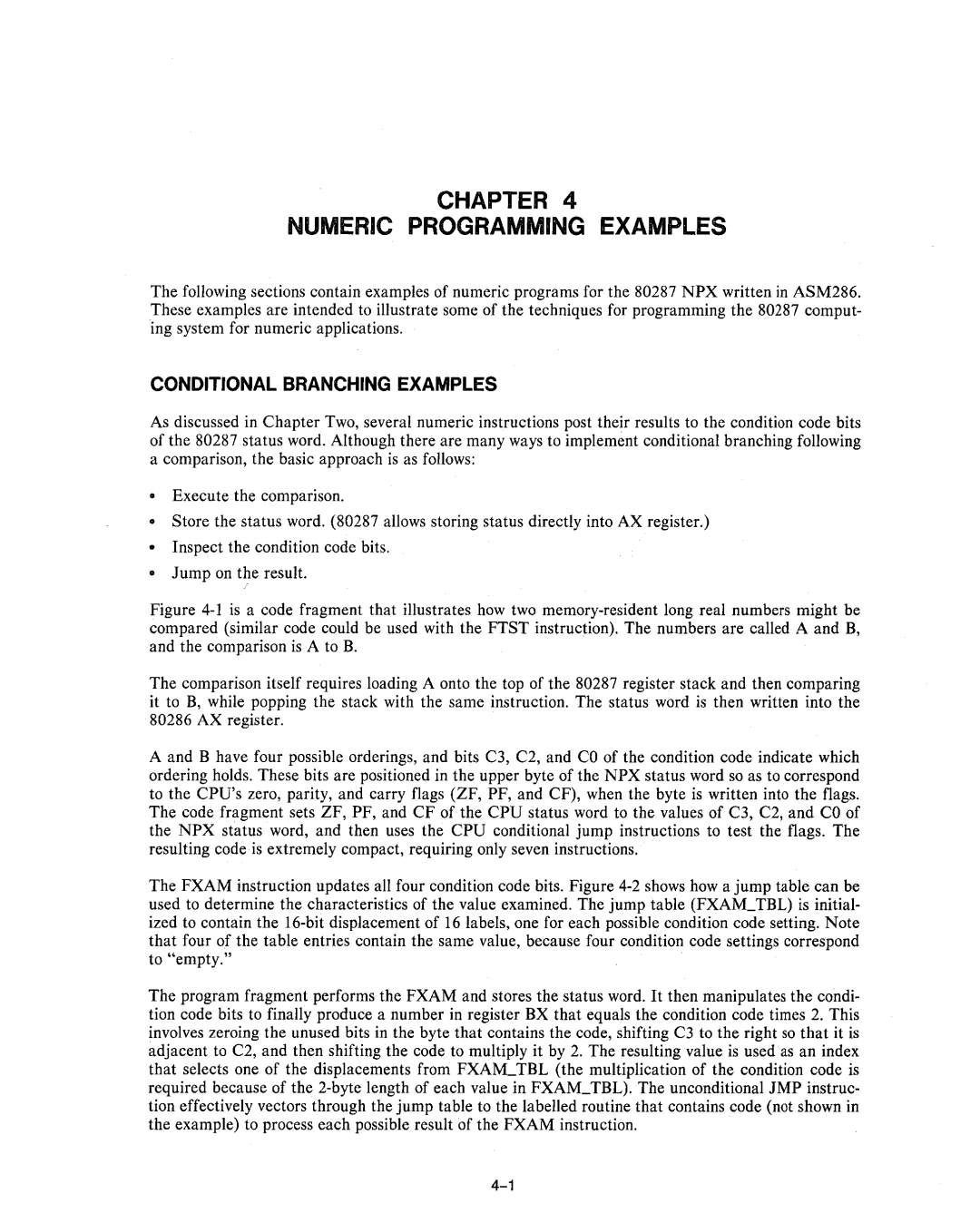
CHAPTER 4
NUMERIC PROGRAMMING EXAMPLES
The following sections contain examples of numeric programs for the 80287 NPX written in ASM286. These examples are intended to illustrate some of the techniques for programming the 80287 comput- ing system for numeric applications.
CONDITIONAL BRANCHING EXAMPLES
As discussed in Chapter Two, several numeric instructions post their results to the condition code bits of the 80287 status word. Although there are many ways to implement conditional branching following a comparison, the basic approach is as follows:
•Execute the comparison.
•Store the status word. (80287 allows storing status directly into AX register.)
•Inspect the condition code bits.
•Jump on the result.
r
